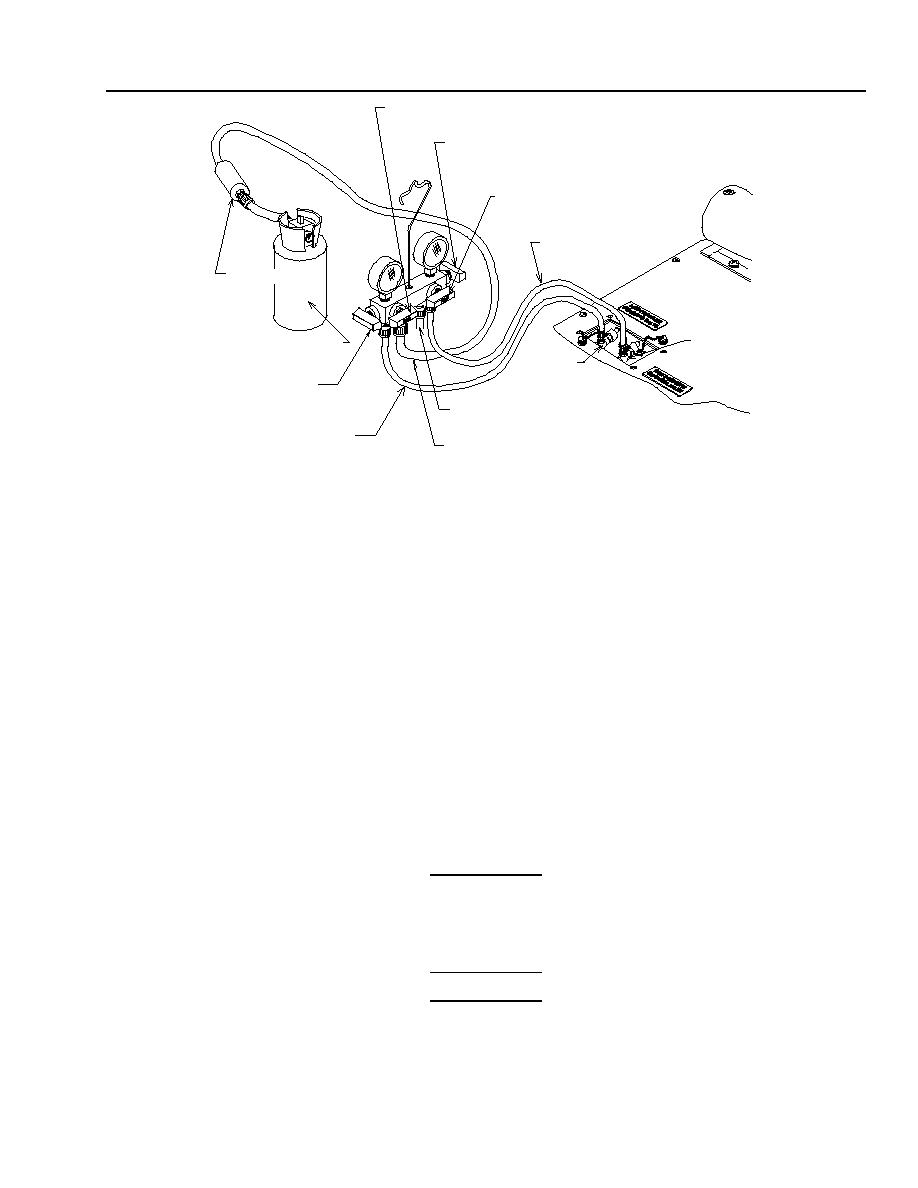 |
|||
|
|
|||
|
|
|||
| ||||||||||
|
|
 TM 9-4120-428-14
0071 00
VAC
VACUUM VALVE
HIGH
PRESSURE
GAUGE VALVE
CLOSED
REF
CHARGE VALVE
CLOSED
RED 1/4 IN.
PRESSURE GAUGE
HOSE (HIGH)
HIGH
TYPICAL REFRIGERANT
PRESSURE
R-22 TANK IN POSITION
LOW
CHARGING
TO CHARGE GAS
PRESSURE
VALVE
LOW
CHARGING VALVE
CLOSED
COMPOUND
GAUGE VALVE
YELLOW 1/4 IN.
CHARGE HOSE (REF)
BLUE 1/4 IN.
COMPOUND GAUGE
YELLOW 3/8 IN.
HOSE (LOW)
VACUUM HOSE (VAC)
16. Set the refrigerant cylinder to deliver gas only.
17. Ensure the pressure gauge valve is closed.
18. Open the compound gauge valve.
19. Open the charge valve.
20. Monitor the weight of the refrigerant cylinder as the air conditioner compressor pulls additional refrigerant into the
system until full charge is obtained (2.2 pounds (1.0 kg) for F9000H-1SA or 2.4 pounds (1.09 kg) for F9000H-3SA).
21. Run the air conditioner in COOL mode with the temperature set at the maximum COOLER position for 15 minutes.
22. With the unit running, observe the sight glass on the back of the condenser section. Be sure that the refrigeration
system is not in BYPASS mode. When the system goes into BYPASS, bubbles will appear in the sight glass.
A green center indicates the refrigerant moisture content is acceptable.
A yellow center indicates there is too much moisture in the system. It must be discharged, evacuated, and
charged again.
A milky- white or bubbly liquid indicates the system has a low charge.
A clean, bubble-free liquid around the center indicates the system is fully charged.
23. If the charge is still low, carefully add refrigerant.
CAUTION
Severe damage can affect the compressor. Never introduce liquid refrigerant into the low
pressure (suction) charging valves.
a)
Set the refrigerant cylinder to deliver gas only.
WARNING
The cylinder may rupture and cause personnel injury. Never introduce a high discharge
pressure into a refrigerant cylinder.
b) Ensure the pressure gauge valve is closed.
c) Open the compound gauge and charge valves.
0071 00-3
|
|
Privacy Statement - Press Release - Copyright Information. - Contact Us |